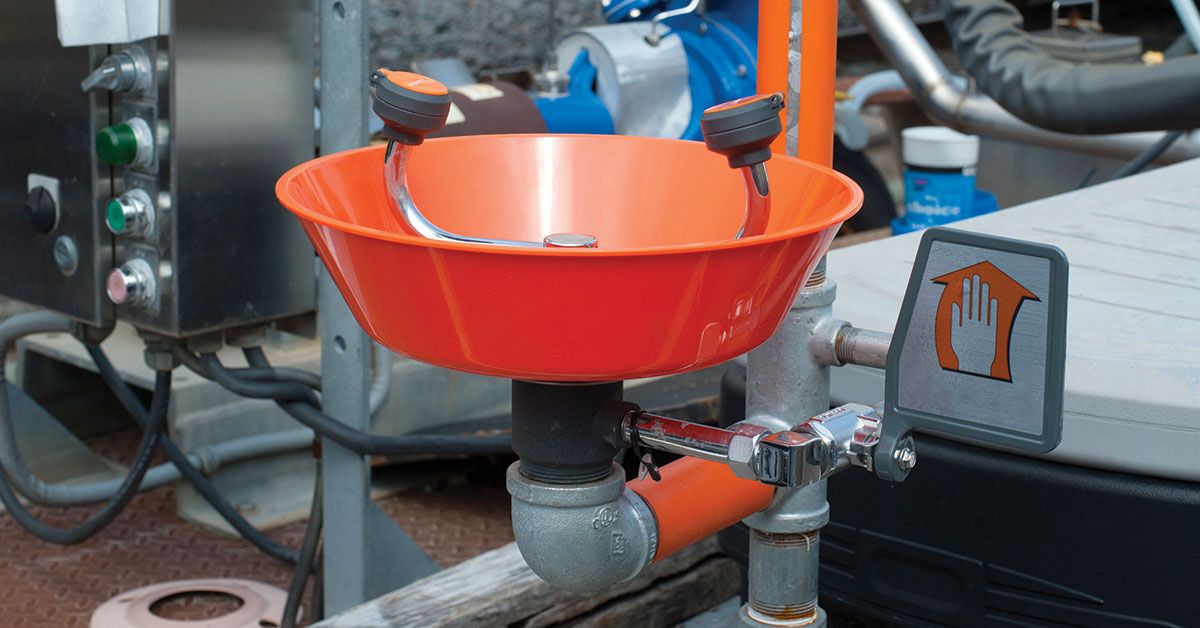Ensure your eyewashes are adequate
Date Posted: 06/17/2024

It’s an event no one wants to experience: Having to hold their eyes open while an eyewash pounds them with flushing fluid, yet at the same time experiencing a burning sensation from the chemical that has splashed onto their face. There’s panic, confusion, fright, and many other emotions … none of which come in handy during the situation.
That’s why employers must provide eyewash stations where workers are exposed to injurious corrosive materials. Those stations must be in near proximity to the workers. And, importantly, workers must know where they are, how to use them, and what to expect should they ever have to use them.
Ideally, workers would always wear safety goggles when exposed to hazardous chemicals and those goggles would adequately protect the worker. But employers can’t rely on that protection alone — there will be times when the chemical gets through the goggles for some reason, or the worker isn’t wearing goggles when something unexpected occurs. In those cases, an adequate eyewash is a must.
What’s considered an adequate eyewash?
OSHA says a plumbed or self-contained eyewash unit that meets the specifications of ANSI/ISEA Z358.1 would be compliant. ANSI/ISEA Z358.1 is an American National Standard that provides specifications for the design, testing, maintenance, and use of emergency eyewash and shower facilities. While ANSI/ISEA Z358.1 is considered a voluntary standard, OSHA often uses it as a guide when inspecting facilities. As a result, it has gained significant importance within the safety industry.
Per ANSI/ISEA Z358.1, eyewash units must be capable of irrigating for 15 minutes. The 15-minute flow requirement is for corrosive materials. Eyewash units should be designed to deliver fluid to both eyes simultaneously at a volume of not less than 1.5 liters/minute (0.4 gallons/minute) for 15 minutes. They must be located within 55 feet or 10 seconds of the exposure to the corrosive materials.
How often must eyewashes be inspected?
OSHA does not prescribe eyewash inspections under paragraph (c) of the Medical Services and First Aid standard at 1910.151. However, ANSI Z358.1 says that all eyewash units should be inspected and maintained in accordance with the manufacturer’s instructions. If the manufacturer does not prescribe a testing frequency, ANSI says that self-contained units should be visually inspected weekly to determine if the fluid needs to be changed or more should be added. Plumbed units should be tested weekly (ANSI says that components of combination units must operate individually and simultaneously). Running units for at least three minutes is suggested to reduce microbial contamination.
There are no recordkeeping requirements with regard to eyewash inspections. As such, it’s up to the employer to establish a best practice based on the circumstances found in the workplace and how long other and similar records are kept.
How Safety Management Suite Can Help
Wondering if your eyewash units are compliant – from design and installation to location and operation? The Audits feature in the J. J. Keller® SAFETY MANAGEMENT SUITE provides numerous ready-to-use checklists to help determine what OSHA requires. Performing self-audits allows you to identify and eliminate hazards and helps ensure you’re in compliance.
E-mail Newsletter
Sign up to receive the weekly EHS Insider email newsletter for safety articles, news headlines, regulatory alerts, industry events, webcasts, and more.